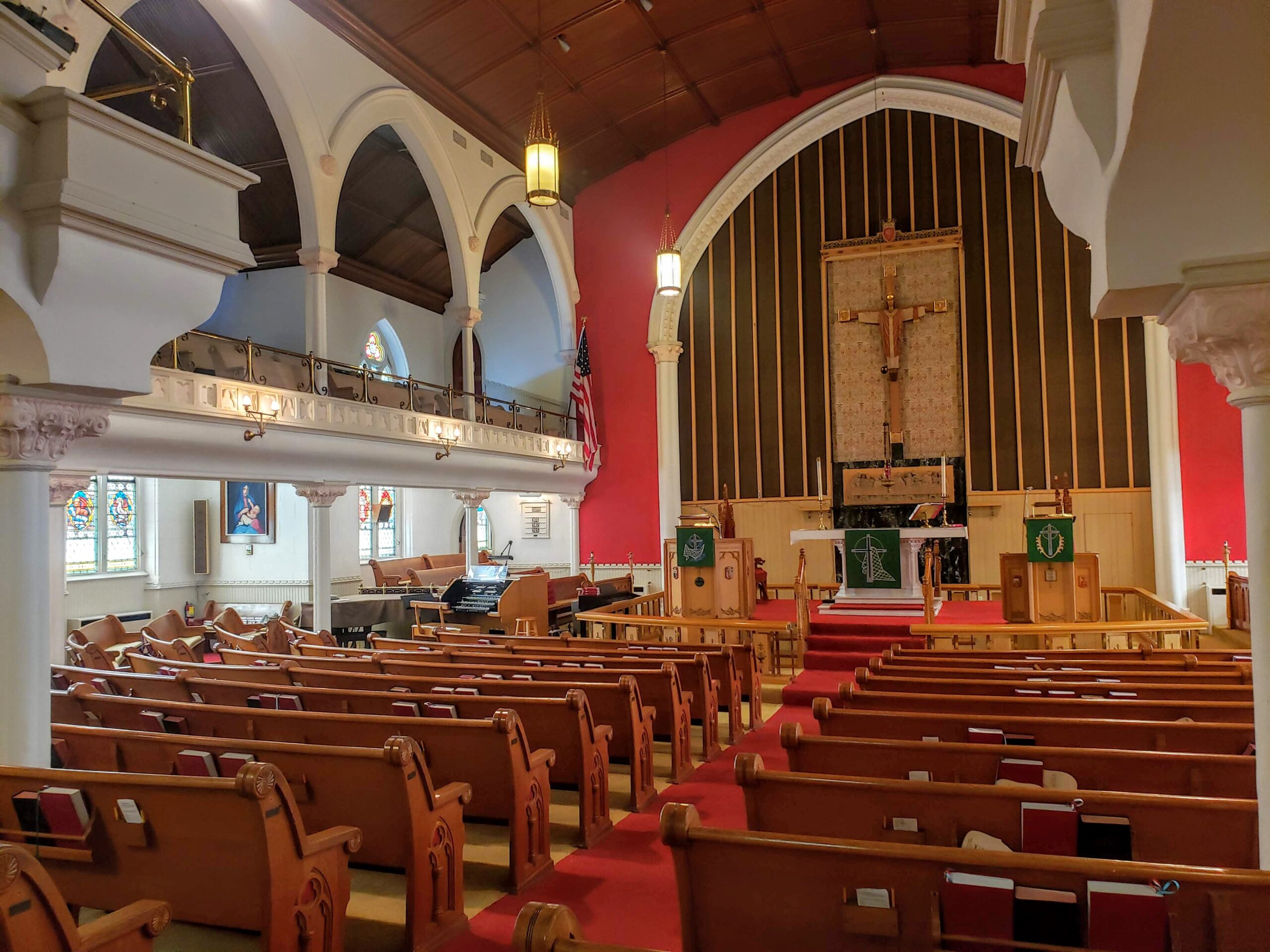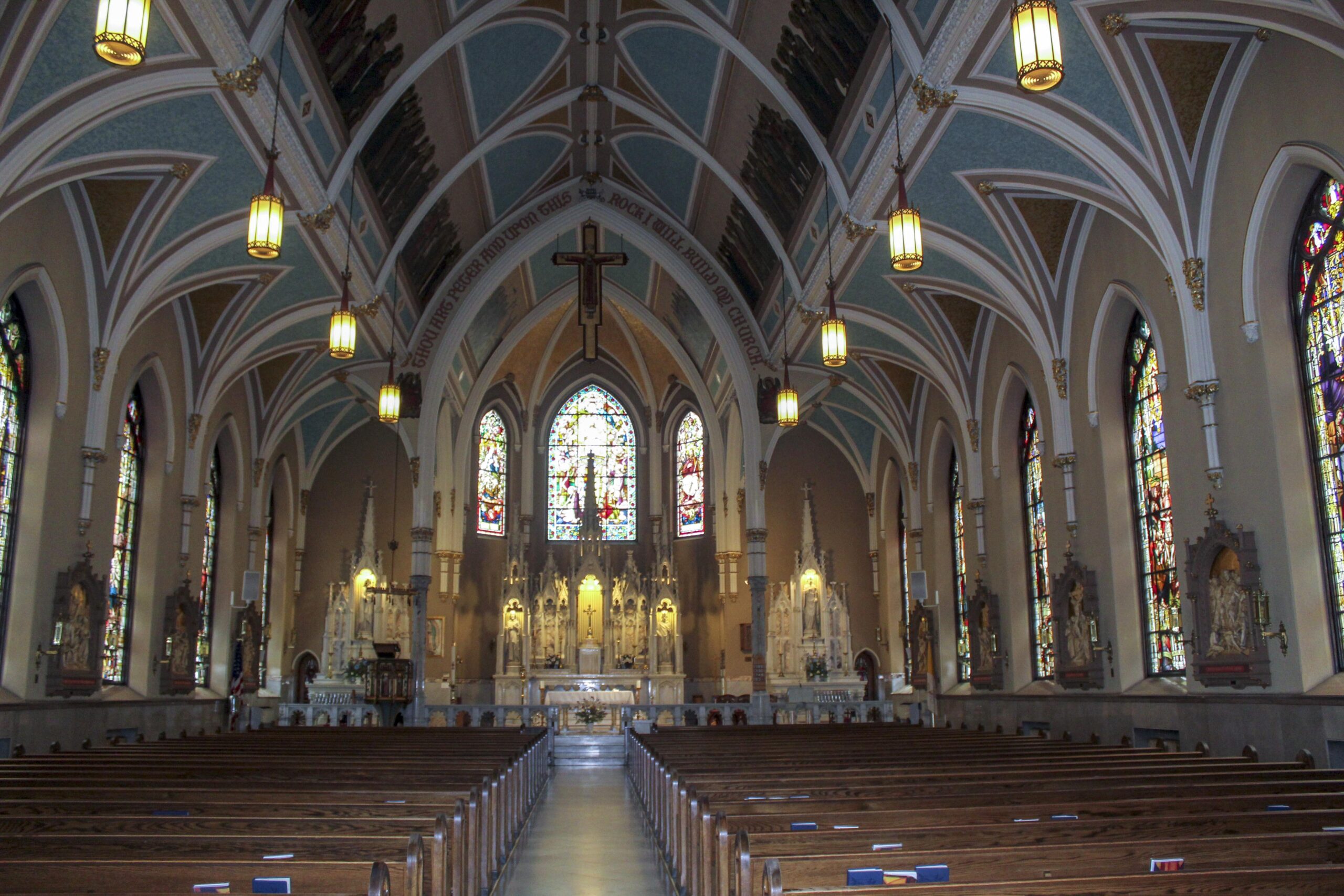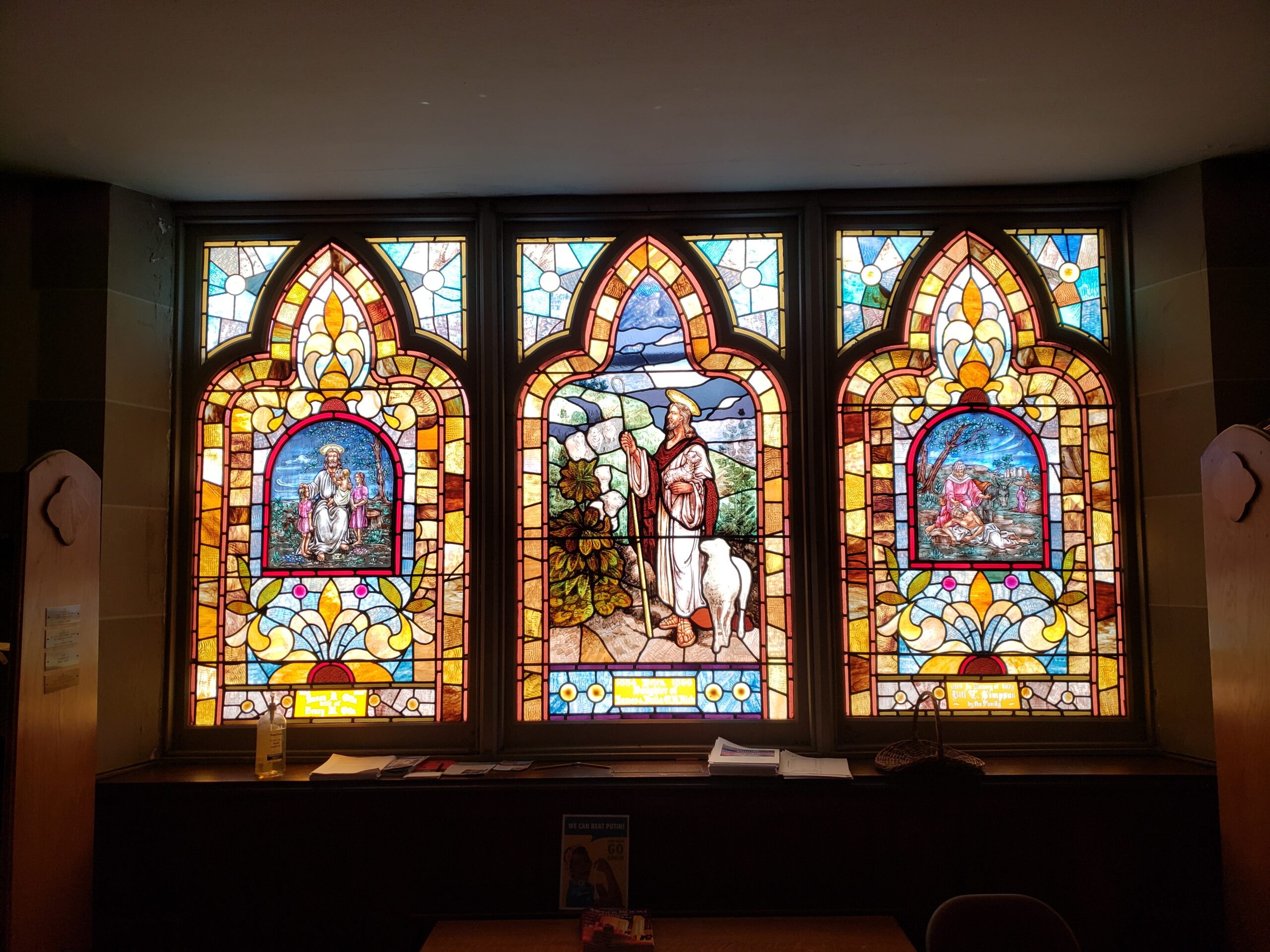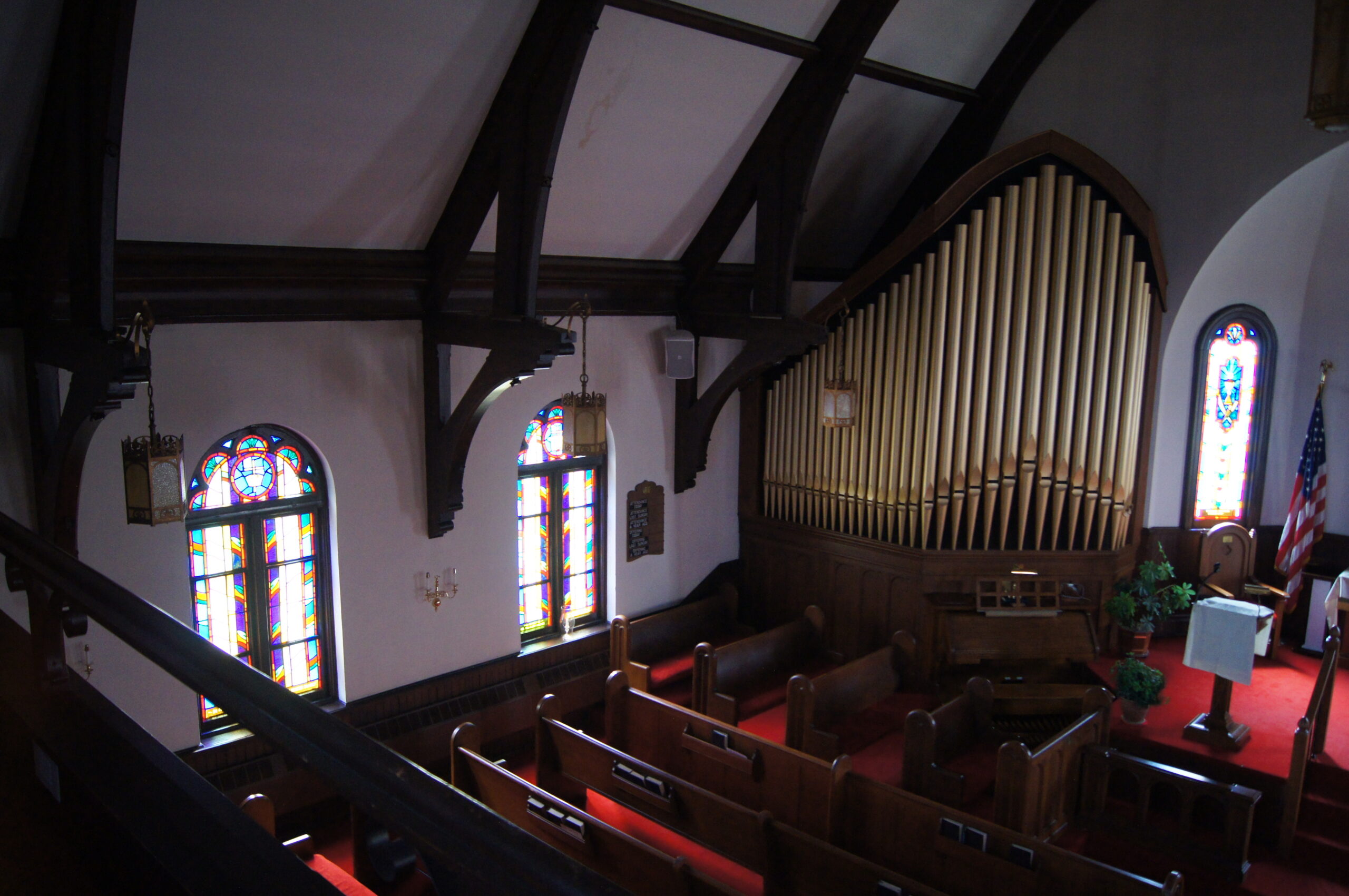By Emily Smedley, Environment and Energy Program Officer at Berks County Community Foundation, and Heidi Williamson, Principal at FlyAway Ink Creative
Berks County, Pennsylvania, contains a mix of small towns, the bustling city of Reading, forests and agricultural land, and a diverse population of residents. It is home to hundreds of churches in both the urban and rural areas, many built in the 1700s and 1800s. Most of the original congregations were Protestant, many of them Lutheran, established by families with German heritage. In Reading, a nine-square-mile city, the number of places that were built for worship grew from about 15 in 1845 to 117 in 1960.
Not only do these sacred places provide gathering points for worship, but they add to the architectural richness of the city, support robust social welfare programs, and provide voting locations central to American democracy. The buildings have served as vital cultural vehicles that helped knit the fabric of Reading’s heritage for generations.
But these sacred places, like many others across America, are at risk.
With this threat to Reading’s sacred places in mind, and with the understanding that these buildings and congregations contribute far more to the community than most people know, the Berks County Community Foundation created the Sacred Places Project, harkening to the name of Partners for Sacred Places, which had agreed to assist the foundation. The heart of the project is to inventory Reading’s existing congregations and sacred places, while assessing the condition of the buildings and the stability of the congregations; learn which ones are of architectural, historical, or community significance; and preserve those assets by encouraging partnerships between congregations and the community.
Leading up to the project kickoff, the Community Foundation was frequently approached by congregations interested in transferring their endowments to the foundation as they closed their doors and sold their buildings. Congregations wanted to preserve the legacies of their churches and the programs they supported in their neighborhoods.
Many congregations were also transferring and decommissioning their religious buildings and selling off anything that had value. The church buildings held more than just architectural, historical, and artistic assets: they also had community meeting rooms, commercial kitchens, and parking lots that could be used in various ways in the neighborhoods. Assessments had to be made to determine how assets and services could be deployed if a church was sold.
After working with Partners for Sacred Places to ensure the project’s feasibility, the Community Foundation recruited three summer interns—an architecture major, a history major, and a business major. The architecture student’s skills were helpful for surveying the physical condition of the churches; the history student brought insight to the importance of the congregations to their communities; and the business student pulled the data together in an accessible way. Further, one of the interns was bilingual in English and Spanish, which was helpful given the number of Spanish-speaking congregations present in Reading today.
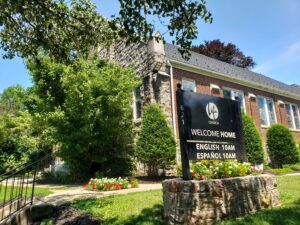
Exterior of Life Church in Reading, Pa.
The students began in May 2019, and Partners for Sacred Places staff provided in-depth training on how to conduct extensive interior and exterior surveys of the buildings, as well as how to interview the religious leaders and staff who ran the churches. Partners joined the interns at their first sacred place, Christ Episcopal Church, which housed the oldest congregation founded in the city.
Over the 13-week internship period, the students created a comprehensive list of the 80-plus purpose-built religious structures that remain in the City of Reading. The interns conducted in-depth tours and interviews at 24 of the structures, taking photographs and gathering information on the interior and exterior of the buildings. For the remainder, they gathered information about the exteriors only. They created summaries for each church and built a website to showcase their results.
The surveys provided valuable information about available space. Commercial kitchens in particular are of interest to local economic development organizations, who can make connections between food start-ups and churches. The surveys also provided a clearer picture of what churches were doing for the community, information that is usually invisible to local nonprofits. Many of the churches offered food assistance, soup kitchens, clothing, and other assistance for unhoused people in their neighborhood. One congregation was quietly offering a safe space for women who were being subjected to sex trafficking, making sure they had food and basic needs like underwear and sanitary items, and a connection to get help.
The project was paused in 2020 and 2021 due to the COVID-19 pandemic but resumed in the summer of 2022. A second group of interns talked to 53 congregational leaders and added that information to the website. In addition, they led a tour of several religious buildings for civic leaders interested in learning more about the assets that these buildings bring to the community. Finally, they created a plan to bring together congregational leaders to discuss how to engage the community in new ways to provide financial support to ensure these buildings remain community assets.
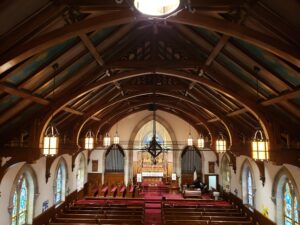
Interior of Calvary United Church of Christ in Reading, PA.
Based on the research and interviews, we know that Reading’s sacred places have followed a trajectory common for churches across America. After a post–World War II religious boom, a steady decline in religious participation started in the 1960s, spurred by social movements challenging traditional church teachings. This decline of religious adherents led to decreased church attendance and, finally, to the dissolving and merging of congregations, some centuries old.
In Reading, between 1980 and 2010, the number of evangelical Lutherans decreased by 20,000 members, and United Church of Christ membership dropped by nearly 16,000. After the 1950s, white families moved to the suburbs at a high rate, and those who continued to come back to the city to worship were frustrated by parking and other logistical issues. Additionally, as congregants aged, the steps and staircases of old churches made them inaccessible and depleted church finances as expensive investments were made in elevators and other ADA-compliant infrastructure.
The changing demographics in the city also played an important factor in the evolving landscape of sacred places. From 2000 to 2020, Reading’s Hispanic population grew from 37% to about 67% according to US Census data. Denominational membership shifted with those demographics. Of the historically significant church buildings the interns surveyed, 23% founded by non-Hispanic white congregations are now home to a primarily Hispanic congregation, and many other historic congregations now hold bilingual services.
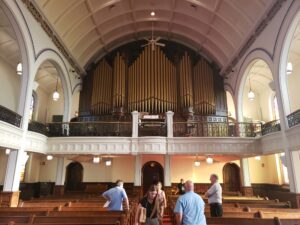
Organ at St. John’s German Lutheran Church in Reading, Pa.
The interns also discovered that most people who regularly visited the church buildings were not attending a service. They were there for childcare, food distribution, club meetings, and other social services. With declining numbers of congregants, some churches became hubs of community activities unrelated to worship. Several churches commented that while higher attendance at weekly service was healthy, the churches’ missions were focused on helping the community first. New Journey United Methodist Church, for example, did not have the numbers to continue religious services, so it disbanded and created a nonprofit organization called New Journey Community Outreach to continue serving those experiencing food insecurity and homelessness within the city. There have been a handful of churches that are no longer offering worship at all: they have either closed completely or been repurposed as wedding and event venues or social service agencies.
When the Community Foundation surveyed congregations on the help it could provide, many said the foundation could offer resources for sacred places, such as guidance on how to create partnerships, find funding, and become ADA compliant. Many congregations have vision but need help to move toward that vision.
The Community Foundation aims to provide that help by partnering again with Partners for Sacred Spaces in 2024 to host the New Dollars/New Partners training program. Several churches—spanning denominations, locations, sizes, and missions—will focus on building capacity so they can better serve their communities as anchor institutions. It is the hope of the foundation that Berks County will be home to these historic sacred buildings and the important community programs they nurture for many more years.

